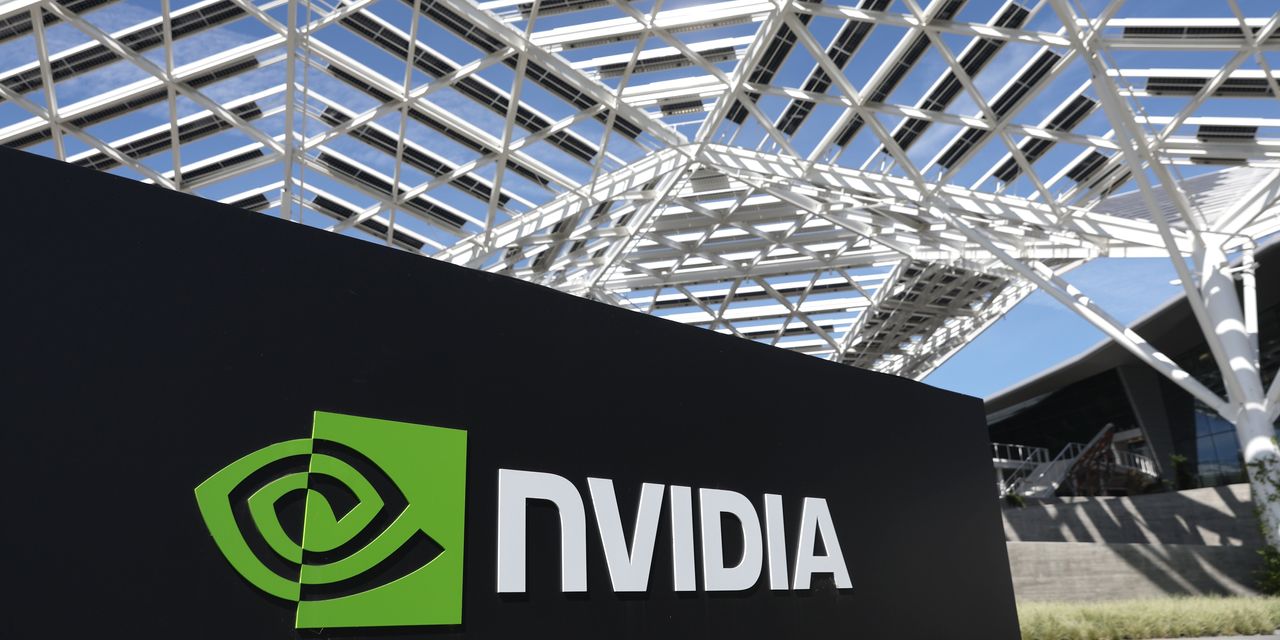After outperforming the Nasdaq by the widest margin in two decades last year, the Dow Jones Industrial Average has sunk back into third place in 2023.
And with little exposure to the stock-market craze of the moment — artificial intelligence — some wonder if this underperformance is destined to continue for the foreseeable future.
After Nvidia Corp. delivered its blockbuster earnings on Wednesday evening, the chip-maker’s shares soared an astromonical 24.4% on Thursday, a huge move for a company that’s already one of the largest by market capitalization.
But the Dow missed out, and when the dust had settled, the Nasdaq had outperformed it by the widest margin since February, according to Dow Jones Market Data. Thursday’s session was also the 100th trading day of 2023, which gave way to another depressing factoid about the Dow’s performance.
During the first 100 trading days of the year, the Nasdaq
COMP,
has now outperformed the blue-chip index
DJIA,
by more than 22 percentage points, the widest margin since the Nasdaq’s launch in 1971, according to Dow Jones Market Data.
The S&P 500
SPX,
has also blown past the Dow, beating it by more than 9 percentage points through the first 100 sessions, also its largest outperformance ever.
The Nasdaq is up more than 21% year to date and the Dow is down roughly 1.2%, according to FactSet data. The S&P 500 has risen 8.1%.
The Dow’s dragging performance has revived criticisms that the blue-chip gauge is antiquated or no longer representative of the broader U.S. equity market.
One popular criticism of the Dow is that it doesn’t have enough exposure to technology stocks, and now artificial intelligence. Enthusiasm about AI has helped drive the rally in stocks in 2023.
While the Dow’s 30 stocks include both Microsoft Corp.
MSFT,
and Apple Inc.
AAPL,
the two tech giants don’t receive quite as heavy as a weighting in the Dow as they do in the S&P 500 and Nasdaq.
This is part of what makes the Dow seem “old-fashioned,” said Eric Diton, president and managing director of the Wealth Alliance, during a phone interview with MarketWatch.
“If you want to talk about artificial intelligence, there’s not a lot of exposure to that in the Dow,” Diton said. “There’s no Nvidia.”
Diton also listed a few other key stocks that are missing from the Dow.
Meta Platforms Inc.
META,
Alphabet Inc.
GOOG,
Tesla Inc.
TSLA,
and Amazon.com Inc.
AMZN,
are also lacking from the Dow, Diton noted, all of which have been major contributors to the S&P 500’s and Nasdaq’s gains this year.
On the other hand, the most heavily weighted stock in the Dow is UnitedHealth Group Inc.
UNH,
Investors seemed more receptive to the Dow last year, when it emerged as the least-bad option in equity markets.
Back then, talk of de-globalization and soaring energy prices helped limit losses in some cyclical sectors, while driving shares of oil-and-gas companies higher,
But the narrative has shifted in 2023. Recession fears have battered companies that are seen to be more closely linked to sectors like real estate, industrials and energy. Meanwhile, the AI craze has revived interest in tech.
This “new economy vs. old economy” dynamic that has emerged between the Dow and the Nasdaq also contributes to the notion that the Dow now longer offers a broad picture of the U.S. market.
“The Dow is kind of out of step with the times,” said Callie Cox, a U.S. equity strategist at eToro, during a phone interview.
Wall Street analysts had largely expected the Dow would continue to outperform in early 2023 as the Nasdaq Composite logged a fresh closing low on Dec. 28, its lowest end-of-day level since July 2020.
To be sure, the Dow isn’t the only major index that is struggling this year. The Russell 2000
RUT,
an index of small-cap stocks, is down 0.4% year to date through Thursday, according to FactSet data.
Some still see value in the Dow since it doesn’t trade at quite as high a premium to the expected profits of its members. The price-to-earnings ratio for the blue-chip average stands at 16.4, compared with 18.3 for the S&P 500 and a whopping 26 for the Nasdaq Composite.
The Dow finished Thursday’s session down 35.27 points, or 0.1%, to 2,764.65. It marked a notable improvement off its lows, where the index was down more than 200 points. The Nasdaq Composite finished the day up 213.93 points, or 1.7%, at 12,698.09. The S&P 500 was off 36.04 points, or 0.9%, at 4,151.28.
Read the full article here







